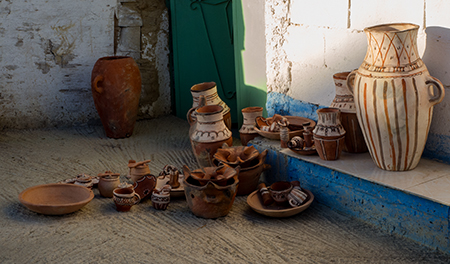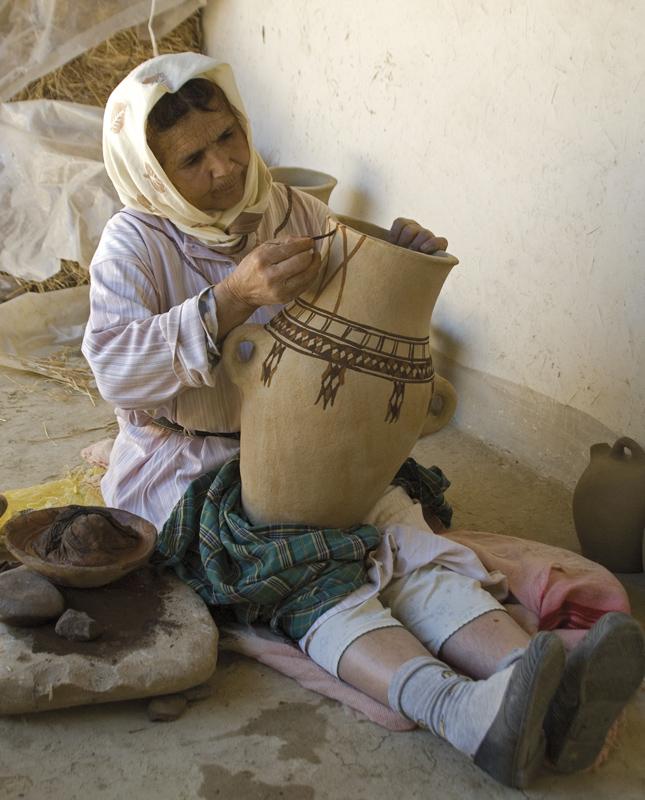The pottery of the Rif people in Morocco is unique in the world and still survives the test of time. Their ancestral techniques have been passed down orally from generation to generation until today.
For travelers, it is a way to discover the culture of the Berbers and to take home a little piece of it if they are lucky. At the same time, buying a piece means that this custom is not lost.
That is why, in this post, we are going to explain what is so special about them, what techniques are used to make them and what motifs the women represent in them.
Who makes Berber pots?
The art of pot making is uniquely feminine. Its purpose is purely utilitarian. For this reason, they are made by women in rural areas with materials and shapes suitable for food preservation.

They are only made in the villages of the Rif, so it is difficult elsewhere in Morocco. So, if you want to see them, we recommend you to join one of our tours.
What is its origin?
Its origin is the Neolithic pottery. If you think about it, their shapes and simple colors remind us of the antique pots that we usually see in museums.

It turns out that the elaboration of utilitarian vessels has been lost in other countries, such as France, Greece, Spain or Italy, but not in Morocco.
How are they made?
- They are made with clay that the potters themselves extract from a nearby clay pit. They grind and sift it. They also remove all impurities so that the final piece is as smooth as possible.
- On top of a disc, which they place outside the house, they make churros and join them together with the help of brushes, scrapers and other materials.
- The vessel is smoothed, painted and decorated.

- Finally, they put it in the oven to cook. They do not have the oven inside the house, but outside, in the back of the house. That fact is just a superstition.
With what colors and motifs do they decorate them?
The colors used are red and brown. Once cooked and depending on the time and intensity of cooking, the tones can vary between orange, red, ochre, brown or black tones.
The decorations, contrary to what it may seem, do not have decorative purposes. Their purpose is magical-religious.
Therefore, there are abundant motifs of nature such as wheat, fish, frogs, snakes. There are also some that represent female divinities in a schematic form, to promote fertility.

Others represent the Hand of Fatima. On the right, the hand of Fatima represents the sins of Islam, while on the reverse, it is considered a protection against the evil eye. Another widely used symbol is that of the eye, also protective.
If you see triangles in any of them, if they have their vertices downwards, they represent the woman, while if they have their vertices upwards, they represent the man.
Water pottery can be decorated with aquatic motifs such as ripples, or with the tree of life. There may be more motifs in Rifian pottery, but these are undoubtedly the main ones, and therefore, the ones we will find the most.
Why can’t they be purchased in any city?
Because Rifian women do not make them for commercial purposes and, moreover, they can only make them in their free time, when they do not have to do other household chores.
If you find any for sale in a flea market near the Rif, it is because sometimes they sell the surplus of the vessels, that is, those that they are not going to use.



